We pay a lot of attention to the health of our hair, and we spend a lot of money making our hair look thick, lush, and shiny. However, sometimes it can be difficult to figure out which hair care products are worth buying and which pieces of advice are worth following.
Here figured out which popular statements about hair care you should stop believing.
Myth #11: Too many lost hairs is always bad.
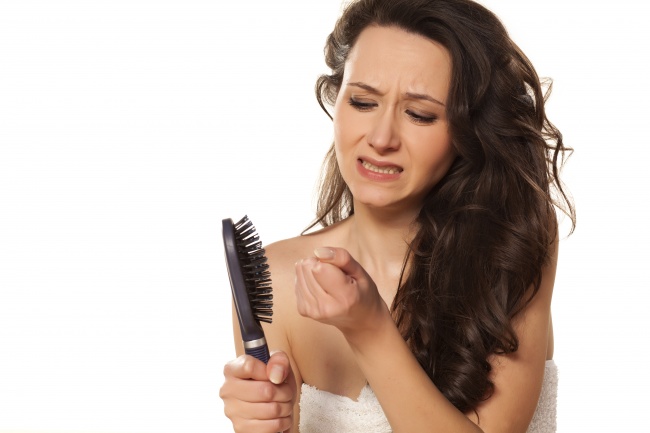
Advertisements
© depositphotos
Every day about 150-200 hairs fall from our head. However, twice a year, usually in spring and in fall, our hair goes through a phase called telogen (also known as the resting phase of the hair follicle). During this stage, it is not growing anymore and simply lies on our heads. This is why hairs then fall off in such big amounts. Then new hairs (the anagen stage) start to appear in the emptied hair follicles.
But if significant hair loss occurs more than twice a year and for longer than a month, you should definitely consider visiting a doctor.
Myth #10: There are products that can make your hair grow faster.
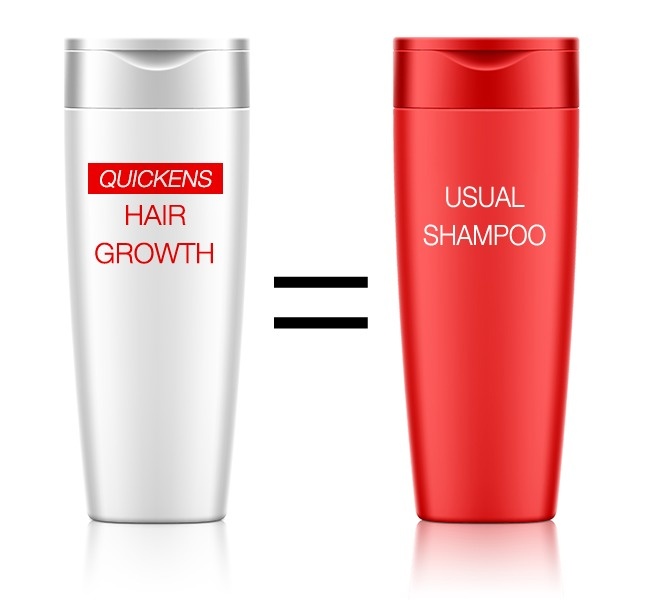
© depositphotos
Even the most powerful hormonal drugs can’t force cells to divide at a higher speed, which is why no cosmetic products can make your hair grow faster. The growth speed is a genetic trait, and it is usually 1 cm per month.
Myth #9: Both shampoo and conditioner should be applied to the entire hair length.
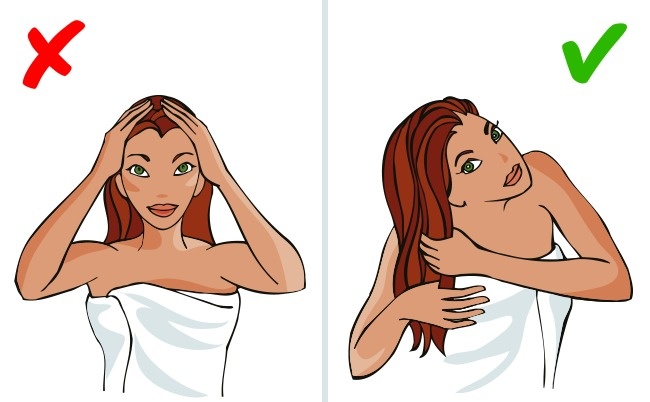
© depositphotos
In fact, shampoo is a product for cleansing not the hair but the scalp, and that is why it should be applied to the roots. The foam and shampoo leftovers that are on the hair while rinsing will be enough to cleanse the whole hair length.
However, it’s vice versa with conditioner: you should apply it only to the hair itself. Hair roots are naturally healthier and get oily much quicker, and so the moisturizing effect of a conditioner is not needed.
Myth #8: Blow drying spoils hair.
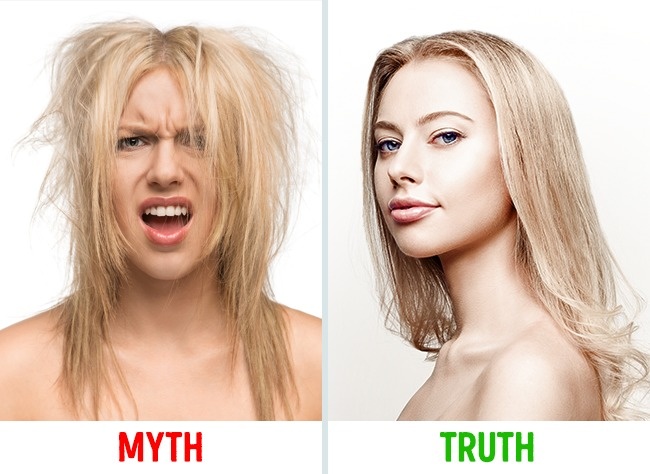
© depositphotos
In fact, hair dryers, as well as different hair curlers, negatively affect only "bare hair" — hair that is not protected by any styling products. If you use special cosmetic products for hair styling, such as a hair foam or some kind of a thermal protection, you don’t need to worry about the health of your hair.
Myth #7: The more you cut your hair, the faster it grows.
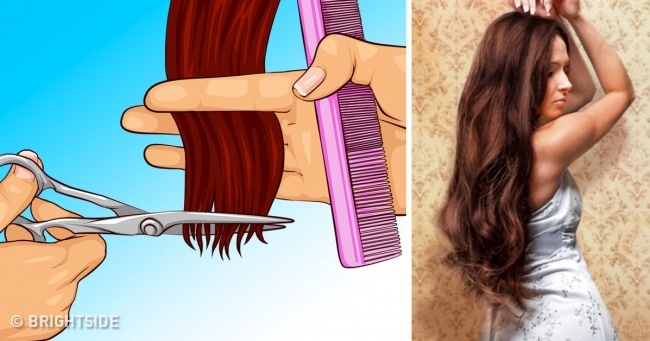
© depositphotos
Since hair grows from the roots and not from the ends, a haircut doesn’t affect growth speed in any way. In addition, contrary to popular belief, shaving your head doesn’t affect hair density since the number of hair follicles is a genetic trait.
Myth #6: If you cut your child’s hair before she turns one, her hair will become thicker.
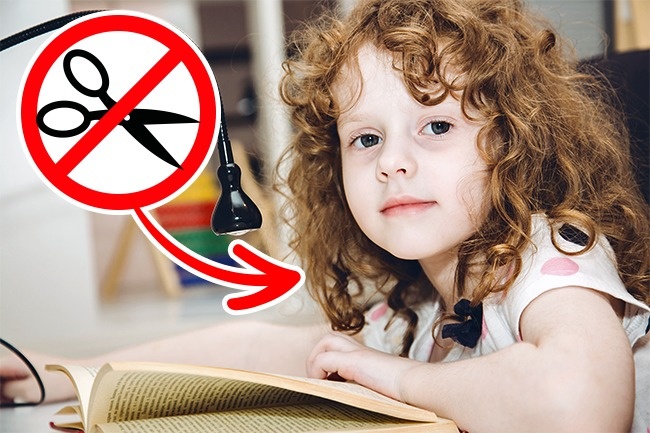
Advertisements
© depositphotos
It’s true that a baby’s hair looks more like fluff and is often devoid of pigment. If you cut a baby’s hair, hair will start growing with a structure resembling that of "adult" hair. That’s where the illusion of a baby’s hair getting thicker comes from. In fact, thicker and denser hair will start growing on a baby’s head anyway, irrespective of whether you cut the baby’s hair or not.
Myth #5: Keratin straightening is good for your hair.
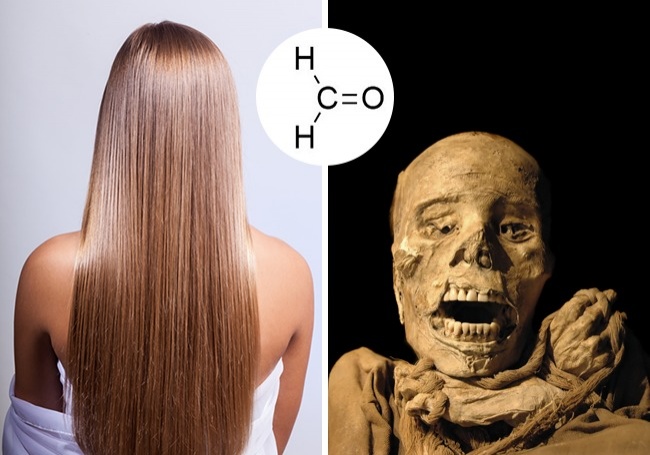
© depositphotos
Of course, the formula composition for keratin straightening has improved over the years. Initially, it contained formaldehyde, used in autopsies. Today the formula for keratin straightening contains the same elements that were used by our mothers for chemical waving, and they destroy the hair’s structure. Therefore, keratin straightening is not a healthy procedure for taking care of your hair but a cosmetic procedure to give your hair visual appeal.
Myth #4: Blonde girls have less hair than brunettes.
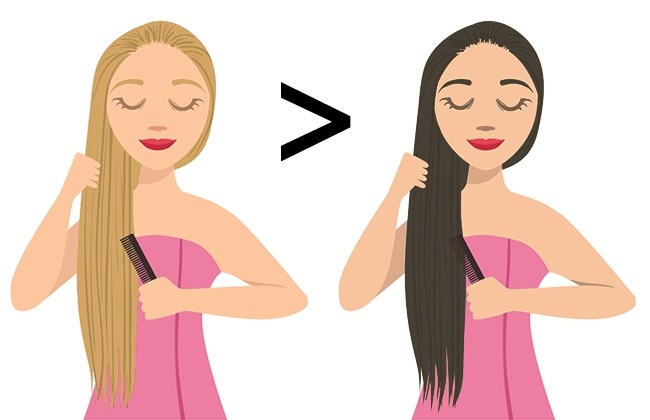
© depositphotos
In fact, scientists have discovered that blondes have more hair than brunettes and redheads. However, their hair is much thinner. That’s why natural blondes can rarely boast about their thick and dense hair, while redheads always cause sighs of envy. Meanwhile, redheads have the least amount of hair, but it is the thickest and the strongest, and these qualities give them such a healthy look.
Myth #3: Permanently wearing ponytails or buns provokes hair loss.

© depositphotos
Only if you tighten your hair so much that your head starts to feel pain. The hairdo itself will not cause hair loss. Moreover, a neat ponytail will protect your hair from possible damage.
Myth #2: Dandruff is contagious.

© depositphotos
Dandruff is a sign of the extra work of your sebaceous glands, due to which an extra amount of exfoliated skin particles appears. That’s why you can’t "get infected" with dandruff by trying on another person’s cap or by borrowing his comb. However, that doesn’t mean that one should forget about the rules of personal hygiene.
Myth #1: Men’s hair differs from women’s hair.
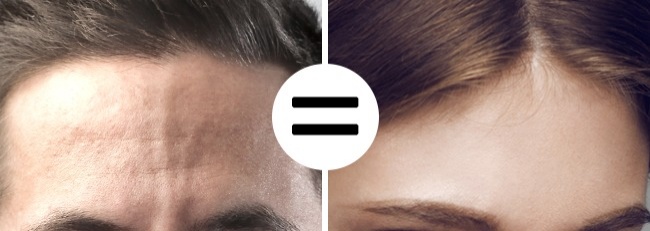
Advertisements
© depositphotos
The anatomical structure of men’s and women’s hair is identical. The difference lies in the way we treat our hair. Women’s hair gets thinner due to constant styling, dyeing, and different experiments in hair salons. Men, in their turn, are more conservative when it comes to taking care of and styling their hair and hairdos, which is why their hair more often stays denser and healthier.
What other myths do you know? Share with us in the comments!
Preview photo credit Depositphotos



Comments